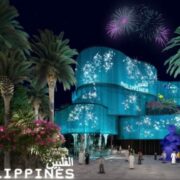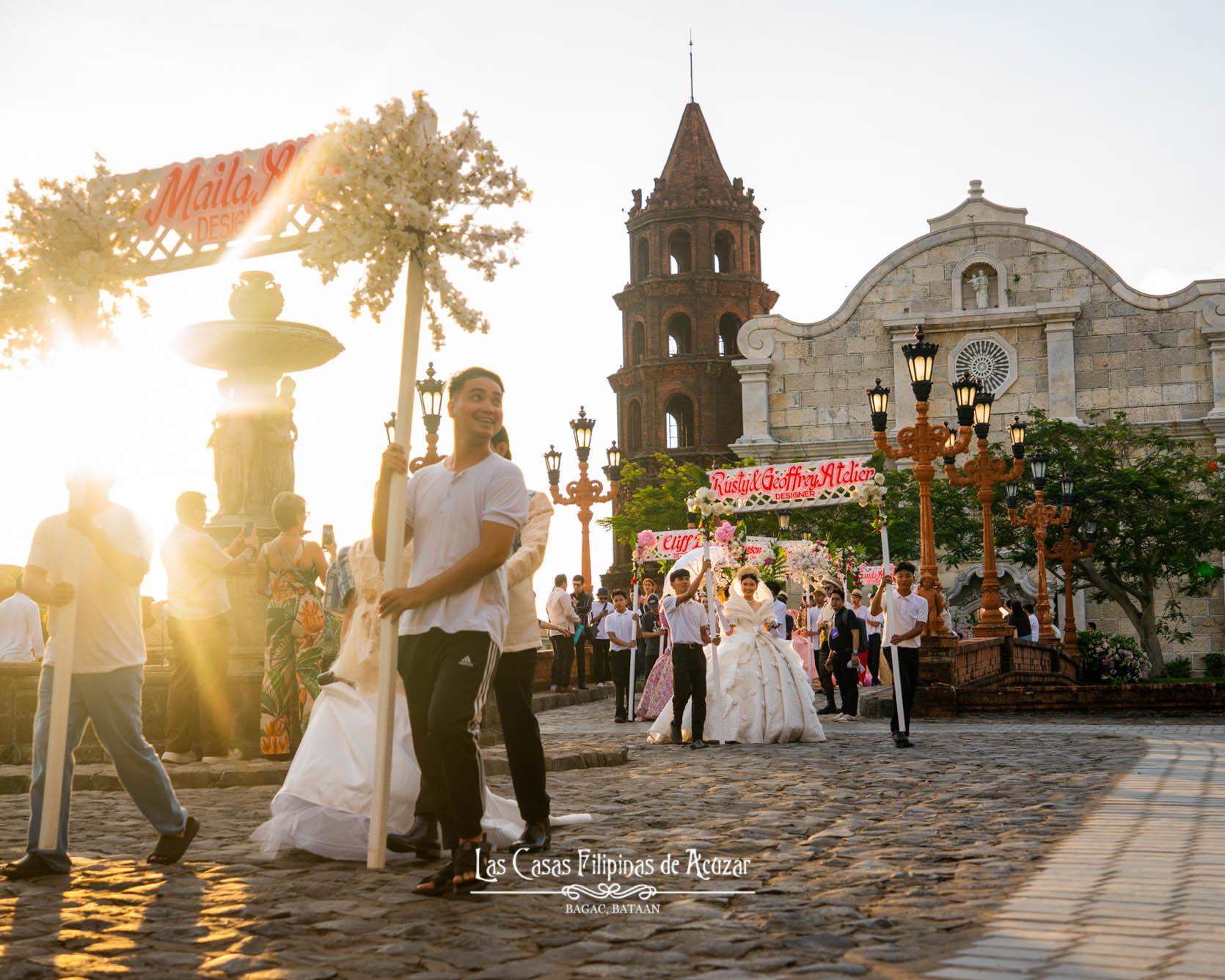
Dubai, United Arab Emirates — As Expo 2020 Dubai opens up for a public visit to give a preview of the site ahead of the full opening in October, the Philippines announced that its ‘Bangkóta’ pavilion is near completion and will present globally-active icons of architecture, art, and design who will drive the pavilion’s experiences and messages.
The Philippines is participating with an imagination-expanding pavilion in this forthcoming edition of the World Expo.
Notably featuring Ramon P. Santos, Laureate of the Order of National Artist for Music, a proud selection of Filipino artists directed their personal artistic languages to create the pavilion sequence of updated ideas about the Philippines.
Opening in October 2021 at the United Arab Emirates, the Expo is expected once again to be the global spectacle for presenting each nation’s understanding of its place in the world; traditionally through national pavilions highlighting their achievements in culture, development, science, business, and social welfare.
High expectations surround the Dubai edition of the unbroken sequence of World Expos—that begun in 1851 with the Great Exposition in London—and the committed Philippine participation through more than a century.
The lead agency, the Department of Trade and Industry (DTI), represented by Assistant Secretary Rosvi C. Gaetos, Alternate Commissioner-General of the Philippine Organizing Committee (POC) Philippines Expo 2020 Dubai, saw fit to dedicate the pavilion space entirely to a re-imagining of the Philippines based on updated science; and expressed through architectural, musical, visual/plastic representation.
Architect Royal Pineda of Budji+Royal Architecture+Design won the national bid for architectural design. Pineda has since led the creative team with architecture evoking the coral reef (bangkóta in ancient Tagalog). He designed spaces that emphasize openness, connectivity, permeability— qualities he believes are enduring aspects of Philippine sense of space.
Curator Marian Pastor Roces describes her selection process of the artists, starting with her choice of Dr. Santos: “The artists each have an already-developed aesthetic language that lends quickly to making imaginative reflections of scientific and humanistic data about the Philippines.” She adds that the selected artists each committed to defocusing on personal artistry, in order to assist the entire pavilion communicate symphonically.
Dr. Santos’ avante-garde musical suite blends indigenous instrumentation and use of traditional vocal techniques with a striking sense of the contemporary, in music that fills the pavilion architecture with texture.
In that sound and architectural environment, Lee Paje conceptualized sculptural work that “dance” with wildlife photography of Scott “Gutsy” Tuazon and Ivan Sarenas. The next space is given to Patrick Cabral’s three-dimensional filigree boat, that receives video mapping of information from updated archaeology.
Baby and Coco Anne fashioned a tall helix rising to the top of the following space, etched with names of Filipinos of different cultures, sharing the same DNA markers that have mixed through 65,000 years; and therefore nullifying racial difference. Which, in the next immense room, becomes the core idea of the specially commissioned video entitled, “Our Gift to the World:” the Philippines’ call to end racial divisions.
The video centers on contemporary dance that poetically gathers motifs of Philippine life, choreographed by Denisa Reyes and Japhet Mari “JM” Cabling, to music by young composer Teresa Barroso.
And the exterior of the undulating architecture, five sculptures mark pivotal spaces: a two-story high mythological figure by Duddley Diaz, a techno-mythological suspended piece by Dan Raralio, “flying overseas workers” by Charlie Co, human-bird forms by Riel Jaramillo Hilario, and an explosion of bird forms by Toym Imao.
Painter Dex Fernandez reflects overseas workers to themselves in a vibrant mural. This mural grounds the body of artistic work composing the Philippine pavilion among the hundreds of thousands of Filipinos in the UAE, who are enjoined to visit the pavilion for a surprising reflection of themselves and their country.
—
About The Bangkóta – Philippines Pavilion in Expo 2020 Dubai
Bangkóta is the name and inspiration for the pavilion of Philippines at the World Expo 2020, which will be held from 1 October 2021— 31 March 2022 in Dubai, United Arab Emirates.
The pavilion, organically shaped like the Bangkóta—the ancient term for “coral reef” in the language Tagalog—updates knowledge about the Philippines, an archipelagic nation that nourished a collective, sea-oriented culture for millennia.
By calling attention to the coral reef-like qualities of Filipinos -such as an inclination for hyper-connectivity—the pavilion offers clues into a people who can build vibrant communities everywhere in the world.
Remaining interconnected with each other as Filipinos, even though massive diaspora, the Philippines’ global stage is held together digitally. In the past 4,000 years, as their Austronesian ancestors spread throughout island Southeast Asia and then embarked across the Pacific, they were and still are connected by the oceans of the world.
The Philippines Pavilion evokes this hardy, traveling people in the sustainability District of the Expo, poetically emphasizing cultural sustainability through the millennia. In a plot size of 3,163.25 sqm, the pavilion presents contemporary expressions in architecture, art, and design that links the deep past with the future of connectivity for the Filipino.
It is conceptualized and actualized by Architect Royal Pineda of Budji+Royal Architecture+Design and independent curator Marian Pastor Roces, collaborating with unusual synchrony with Assistant Secretary Rosario Virginia Gaetos of the DTI, who also serves as Alternate Commissioner General of the POC.
Bangkóta aligns with the theme of this forthcoming Expo 2020 – “Connecting Minds, Creating the Future” – with a riveting image of the Philippines and its people as truly global.
—
Stay updated with news and information from the DTI by visiting their website at dti.gov.ph.






